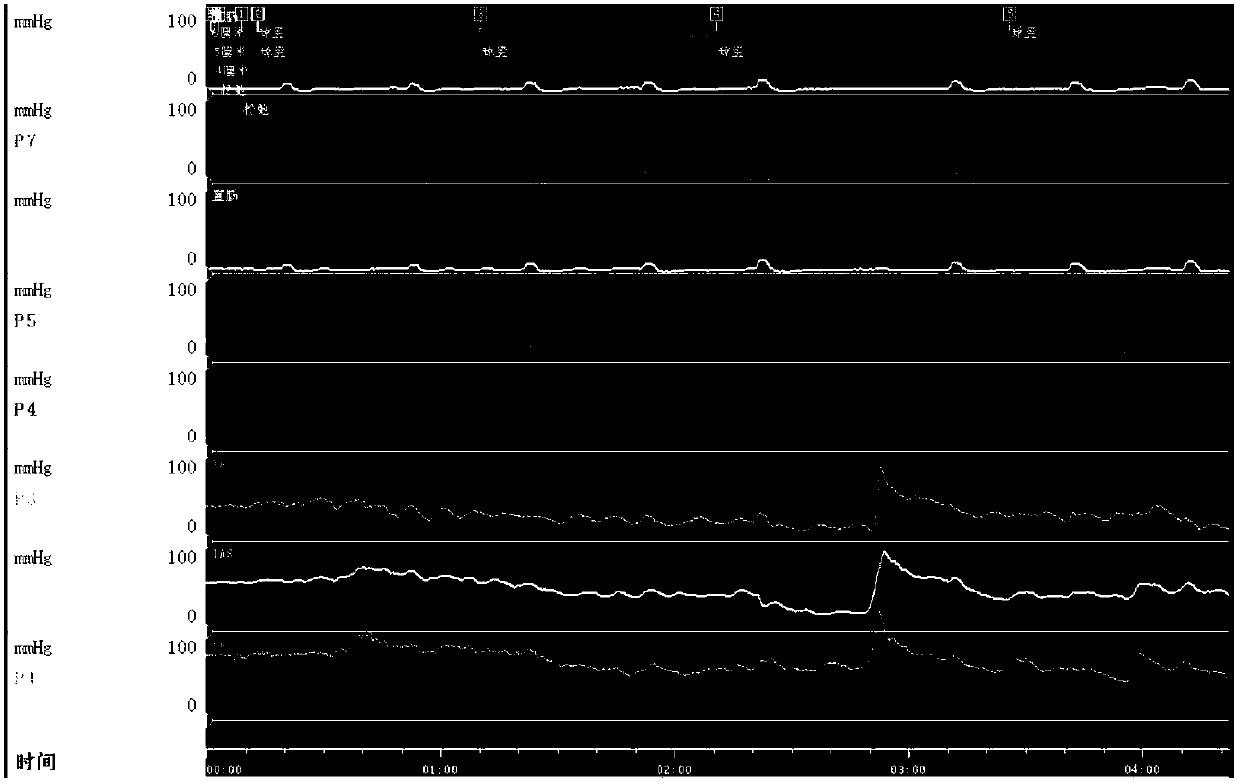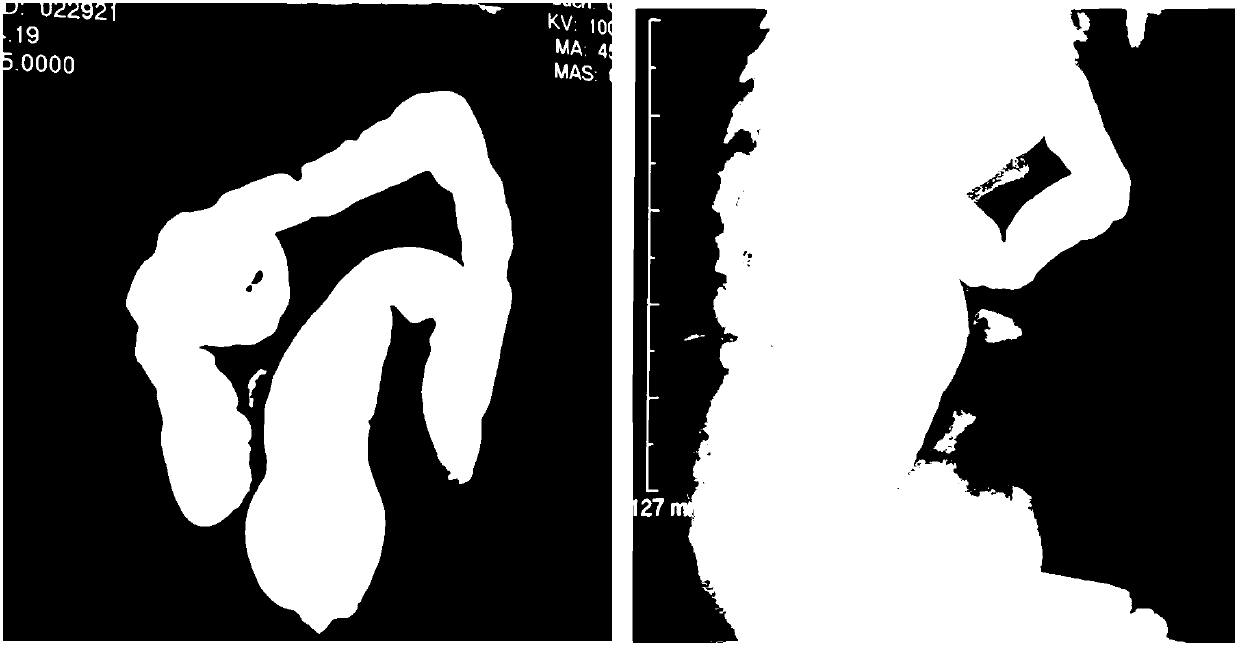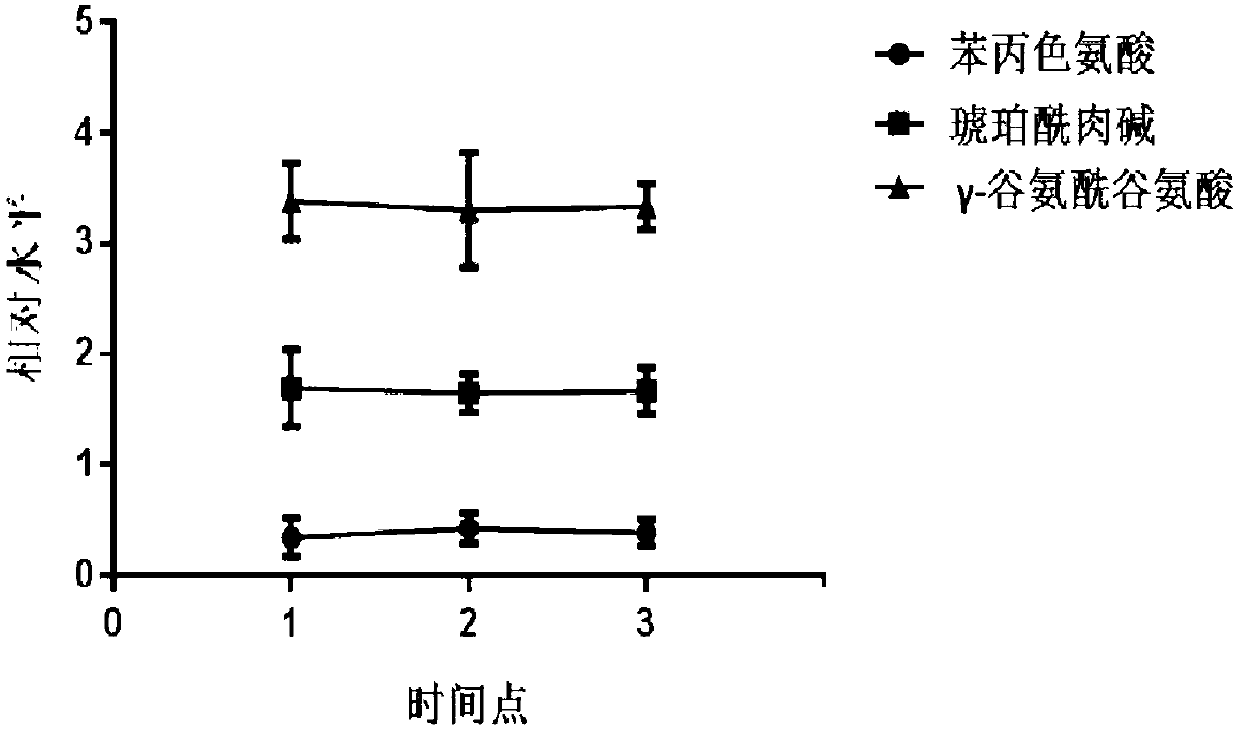Plasma metabolism micromolecular marker related to human intestinal canal aganglionosis and application of plasma metabolism micromolecular marker
A technology for ganglion cells and metabolic small molecules, which is applied in the direction of material separation, material analysis, and measurement devices, which can solve the problems of complex experimental steps and low sensitivity, so as to improve sensitivity and specificity, easy detection, and avoid invasiveness The effect of diagnosis
- Summary
- Abstract
- Description
- Claims
- Application Information
AI Technical Summary
Problems solved by technology
Method used
Image
Examples
Embodiment 1
[0088] Embodiment 1 Research Object Selection and Grouping Basis
[0089] From July 2009 to September 2011, the inventor collected blood and tissue samples from children with CA and normal non-CA children who met the requirements from the Children's Hospital Affiliated to Nanjing Medical University and other hospitals (typical anorectal manometry and imaging examinations). behave as figure 1 , figure 2 ), and selected 100 healthy controls (average age: 89.45±9.1 days) and 100 patients with intestinal aganglionosis (average age: 92.3±7.01 days) who met the requirements as CA metabolism Screening subjects for small molecule biomarkers. Specific sample classification criteria are as follows:
[0090] Group A: healthy control group (n=100, 85 people screened, 15 people verified by independent population):
[0091] 1. Age between 0 and 6 months;
[0092] 2. No digestive system disease;
[0093] 3. No other congenital malformations;
[0094] 4. No other major systemic diseas...
Embodiment 2
[0101] Example 2 The main diagnostic basis of the research object
[0102] The study used anorectal manometry, imaging examination, and rectal wall histological examination to diagnose congenital intestinal aganglionosis in children with repeated defecation difficulties, abdominal distension, and low intestinal obstruction. The main diagnostic basis is: (1) Anorectal manometry shows absence of internal anal sphincter relaxation reflex; rhythmic contraction of anal canal is significantly reduced; resting pressure of rectum and internal sphincter is higher than normal. (2) Enema contrast showed: 1. Spasm and stenosis of the distal colon; 2. Proximal expansion of the colon; 3. There was a funnel-shaped transition section between the spastic bowel and dilated bowel; (3) Histological examination of the rectal wall The results showed absence or abnormal cell development of submucosal and myenteric plexus ganglion cells. The normal ganglion cells have large nuclei, deep staining, ce...
Embodiment 3
[0103] Example 3 UPLC-MS metabolomics CA biomarker screening
[0104] 1. Sample pretreatment
[0105] 1. Centrifuge the fresh blood at 3000rpm for 5min in a centrifuge, take 100μl of the supernatant and dispense it into clean 1.5ml EP tubes.
[0106] 2. 100 μl of plasma was used to precipitate protein with 300 μl of methanol.
[0107] 3. Aspirate the supernatant, divide it into 2 parts evenly, blow dry with nitrogen and then vacuum dry.
[0108] 4. Dissolve one part of the dry product (acidic extract) in 50 μL of water (containing 0.1% formic acid), and dissolve the other part of the dry product in 50 μL of water containing 6.5 mM ammonium bicarbonate pH=8 (basic extract).
[0109] 2. Instrument testing
[0110] 2.1 Analytical instrument: UPLC series ThermoFisher LTQ-FT linear ion trap cyclotron resonance mass spectrometer from Waters Acquity Company was used.
[0111] 2.2 Liquid phase conditions:
[0112] 2.2.1 The liquid chromatographic column is a Waters BEH C18 1.7μm ...
PUM
 Login to View More
Login to View More Abstract
Description
Claims
Application Information
 Login to View More
Login to View More - R&D
- Intellectual Property
- Life Sciences
- Materials
- Tech Scout
- Unparalleled Data Quality
- Higher Quality Content
- 60% Fewer Hallucinations
Browse by: Latest US Patents, China's latest patents, Technical Efficacy Thesaurus, Application Domain, Technology Topic, Popular Technical Reports.
© 2025 PatSnap. All rights reserved.Legal|Privacy policy|Modern Slavery Act Transparency Statement|Sitemap|About US| Contact US: help@patsnap.com



